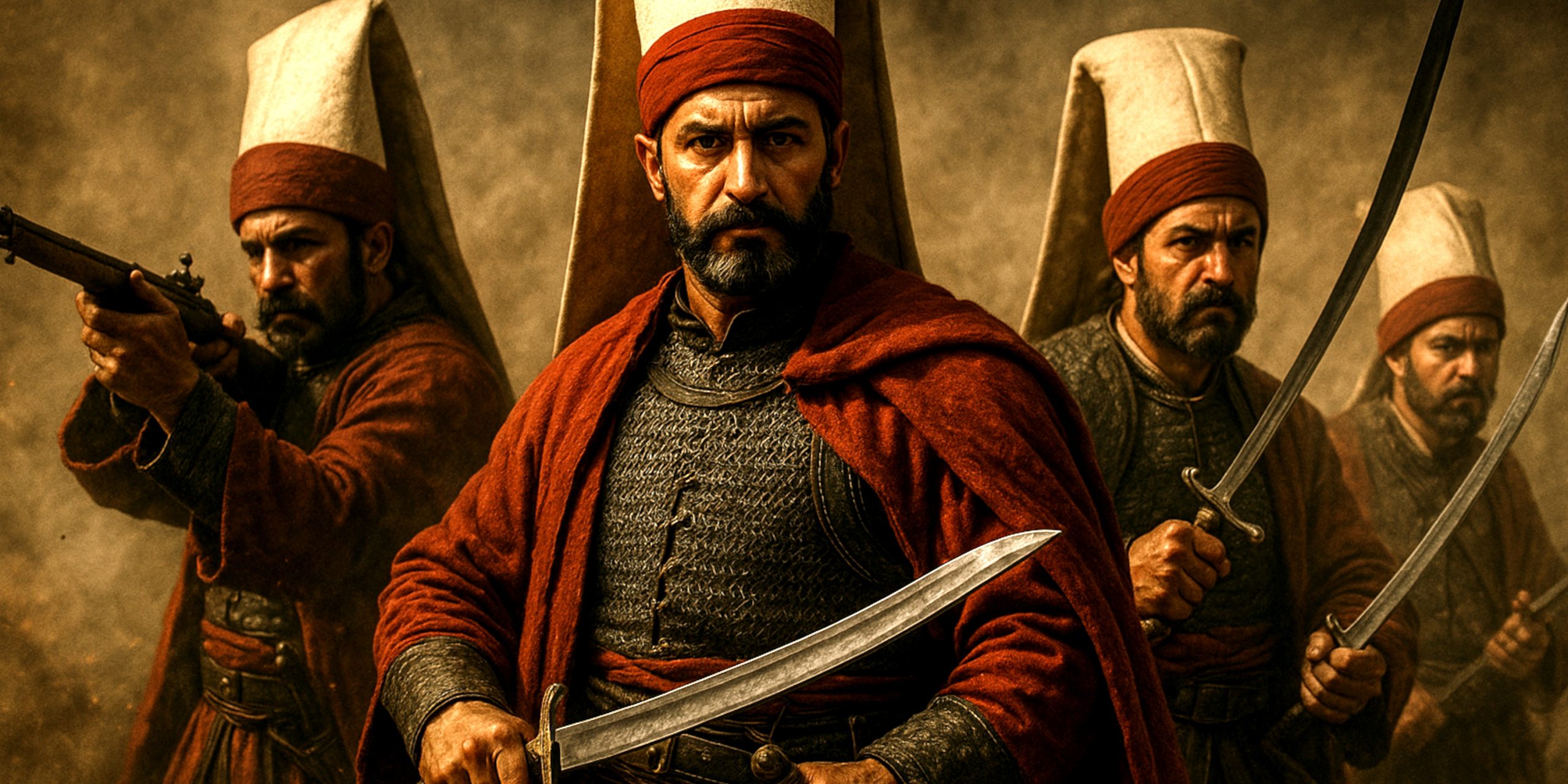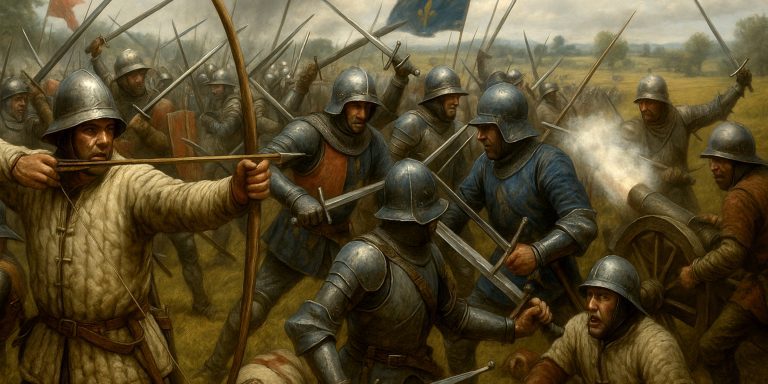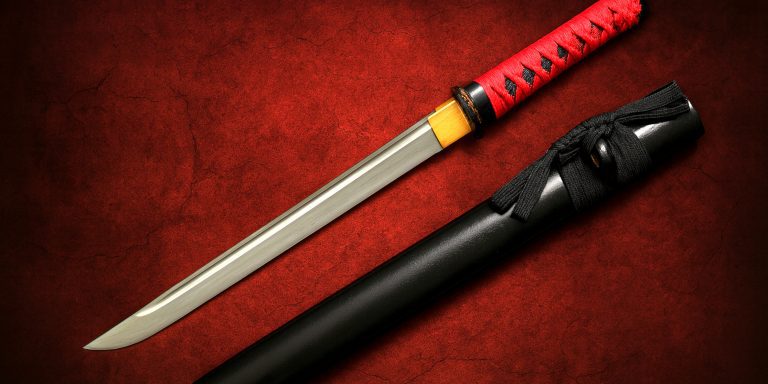
The Janissaries sit in a strange corner of military history. They were feared, admired, occasionally loathed and often misunderstood. They served as the elite infantry of the Ottoman Empire for centuries, and at their height they shaped the tempo of war from Hungary to the Levant. Studying them feels like handling a weapon that has passed through many hands, the surface polished by legend while the scars remain beneath.
Origins and Early Structure
The corps developed from the devshirme system, a levy on Christian boys taken from the Balkans. They were converted to Islam, trained from youth, then folded into a strictly controlled military and social hierarchy. It was not a system built with kindness at its core, but it produced soldiers who thought of loyalty as a kind of steel, forged under pressure and not to be bent.
They were divided into ortas, roughly equivalent to companies, led by officers who rose from within. The structure fostered a sense of identity that went far beyond the battlefield. Their lodges, rituals and culinary guilds gave the corps a culture that clung to them long after the fighting was done. There is something oddly endearing about a military elite so obsessed with their soup that entire political movements rose and fell around the camp cauldron.
Arms and Armour
The Janissaries were not frozen in time. Their equipment changed across the centuries, adapting to new threats and new technologies. Still, some pieces became synonymous with their reputation.
- Swords
- Yatagan: The quintessential Janissary sidearm, with its forward curving blade and distinctive ear-shaped pommel. Light, practical and deadly in close quarters.
- Kilij: A curved sabre with a widened yelman near the tip that delivered tremendous cutting power. Officers and distinguished veterans favoured it.
- Pala: A shorter, broader sabre used in the seventeenth and eighteenth centuries for brutal cutting strokes.
- Ranged Weapons
- Composite Bows: Early Janissaries excelled with the Ottoman composite bow, a weapon requiring years of strength training.
- Muskets: By the sixteenth century they became one of the first standing infantry corps to adopt firearms on a large scale. Their matchlocks and later flintlocks were the backbone of the Ottoman firing line.
- Armour and Clothing
- Bork and Üsküf Headgear: Tall felt caps that signified rank and unit, a little theatrical to modern eyes but deadly serious in their symbolism.
- Chain and Lamellar Vests: Used more heavily in the fifteenth century, gradually set aside as firearms dominated.
- Heavy Cloaks and Distinctive Colours: Their layered clothing was not just practical, it marked them out as members of a privileged and tightly sealed institution.
Training and Daily Life
Training was relentless. Recruits were placed with Turkish families for linguistic and cultural immersion, then funnelled into the Acemi Oğlan school. They lived by a strict code, ate together, trained together and were discouraged from marrying for most of the corps’ early centuries. The idea was to produce men who had nowhere to look except inward to their unit.
There is a note from a Venetian ambassador in the fifteenth century that always makes me smile. He wrote that Janissaries were “silent as carved stone until the order to strike, and then louder than ten storms”. It is a very Venetian way of saying they were well drilled.
On Campaign
The Janissaries served at the heart of many Ottoman victories. They held ground at Kosovo, stormed breaches at Constantinople in 1453, fought through Hungary, clashed with Safavid forces in Anatolia and stood against the Habsburgs for generations. Their reputation was built on discipline, not individual flair, though Ottoman chronicles do love a good tale of a daring solo charge.
As firearms became central to warfare, their muskets laid down controlled volleys, something European observers noted with both annoyance and professional respect. By the seventeenth century, their accuracy had declined as discipline began to buckle, but their central role remained unchanged until the corps’ final dissolution.
Archaeology
Archaeological work on Janissary sites is uneven, largely because many of their barracks were urban and continuously occupied. However, several finds shed light on their world.
Excavations in Istanbul around the Atmeydanı have revealed musket parts, powder flasks, belt fittings and cooking implements linked to Janissary quarters. The fragments of ceramics and metal bowls match Ottoman miniatures that depict Janissary meals, confirming that their guild-like culinary traditions were not just artistic decoration.
Graves identified as Janissary burials often include yatagan blades, ornate belt plaques and occasionally talismanic objects. These finds trace the evolution of their equipment and the shifting identity of the corps, particularly in the later centuries when more personal ornamentation became fashionable.
Contemporary Voices
Chroniclers and travellers left a trail of comments, some admiring, others rather weary.
- The Ottoman historian Aşıkpaşazade praised them in the fifteenth century as “the sultan’s right arm” and the embodiment of obedience.
- Ogier Ghiselin de Busbecq, the Habsburg ambassador, observed that they were “raised not to quarrel with fate, but to bend it with discipline”.
- A later French observer in the eighteenth century wrote, with typical Gallic dryness, that “their muskets are as loud as ever, though their aim has forgotten where it once wished to go”.
One senses a shift from admiration to scepticism as the centuries roll on.
Decline and Abolition
The corps became hereditary by the seventeenth century, undermining the original devshirme model. This eroded discipline and opened the door to political meddling. They still had teeth, but they used them as often on the palace as on the battlefield. By the early nineteenth century their resistance to reform became intolerable to Sultan Mahmud II.
In 1826 the Auspicious Incident brought their story to a violent end. Janissary barracks were shelled, the revolt was crushed and the corps was abolished. It was a grim full stop at the end of a long chapter.
Legacy
The Janissaries remain one of the most recognisable military forces in world history. Their uniforms, their music, their curved swords and their complex inner culture created a legacy that still hangs in the air of Istanbul. As a historian, I find their story both fascinating and cautionary. They were a weapon that shaped an empire, and also a warning about what happens when a weapon becomes a political force in its own right.
Their image survives in museums, in Ottoman miniatures, in European travel accounts and in a thousand overblown myths. Strip back the exaggeration, and you still find a remarkable experiment in military engineering, one that lasted far longer than anyone might have predicted.
If you ever stand in the old Atmeydanı and feel a faint echo of marching feet, you are not imagining it. Some stories cling to the ground where they were forged.
Watch the documentary:



